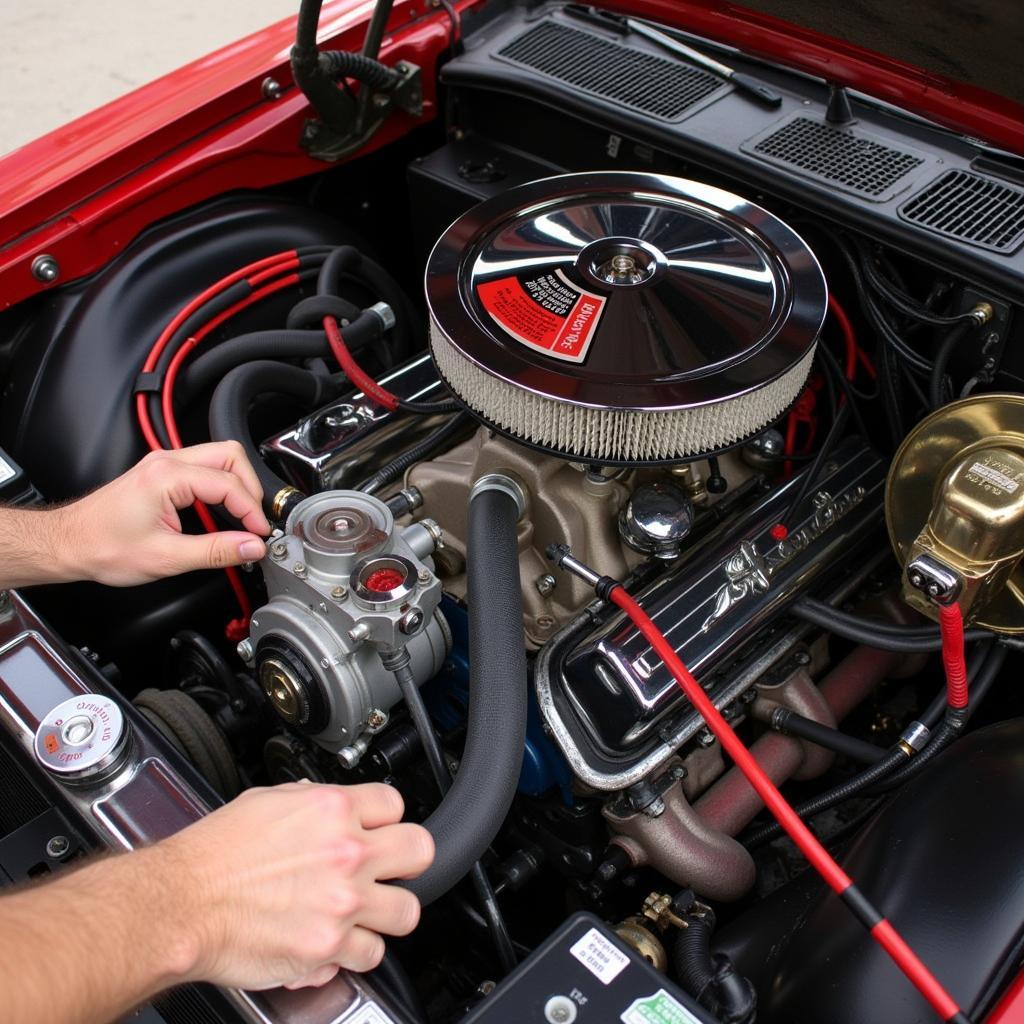Troubleshooting and Fixing Car Stereo Wiring can be a daunting task, but with the right knowledge and approach, it can be done effectively. This guide provides a comprehensive overview of common car stereo wiring problems, diagnostic techniques, and step-by-step solutions to get your car audio system back on track.
Understanding Car Stereo Wiring Basics
Before diving into fixing car stereo wiring, it’s essential to understand the basic components and their functions. A typical car stereo system consists of the head unit, speakers, amplifier (optional), and the wiring that connects everything. The wiring harness, a bundle of wires, transmits power, audio signals, and other necessary information between these components. Knowing how to identify the different wires within the harness – power, ground, speaker wires, and accessory wires – is crucial for successful troubleshooting. For instance, a loose ground wire can cause various issues, from no sound to erratic behavior of the head unit.
Do you know the most common cause of car stereo wiring problems? It’s often improper installation or tampering with the wiring harness.
Diagnosing Car Stereo Wiring Problems
If you’re experiencing problems with your car stereo, the first step is to identify the source of the issue. Common symptoms include no sound, distorted sound, intermittent power, and non-functional features like the CD player or Bluetooth connectivity. Start by checking the fuse box for any blown fuses related to the car stereo. If a fuse is blown, replace it with a fuse of the same amperage. Next, inspect the wiring harness for any loose connections, damaged wires, or signs of corrosion. A multimeter can be a valuable tool to check for continuity and voltage in the wiring.
If you’re not comfortable working with electrical components, seeking professional help is always a wise decision. You can find professionals who specialize in fixing issues like a broken aux port, as described in this article: who can fix aux port in car.
Common Car Stereo Wiring Issues and Solutions
No Sound from the Speakers
One of the most common problems is no sound coming from the speakers. This could be caused by a blown fuse, loose speaker wires, or a faulty head unit. Double-check the speaker wire connections at both the head unit and the speakers. Ensure the wires are securely attached and free from corrosion. Test the speakers using a multimeter to confirm they’re working correctly.
Power Issues with the Head Unit
Another frequent issue is the head unit not powering on at all or powering on intermittently. This could be due to a blown fuse, a loose power wire, or a problem with the car’s ignition switch. Check the fuse box and replace any blown fuses. Inspect the power wire connection to the head unit and ensure it’s secure. If the problem persists, you may need to test the ignition switch to see if it’s supplying power correctly.
Distorted Sound from Speakers
Distorted sound can be due to several factors, including incorrect speaker wiring, a faulty amplifier, or a problem with the head unit’s audio output. Ensure the speaker wires are connected to the correct terminals on both the head unit and the speakers. If you have an amplifier, check its connections and settings. If you’re having trouble with no sound at all, this article can be helpful: how to fix a car stereo that has no sound.
“A common mistake people make when fixing car stereo wiring is using the wrong gauge wire. This can lead to overheating and potential fire hazards,” says John Smith, a certified automotive electrician with over 20 years of experience.
Troubleshooting Tips for Fixing Car Stereo Wiring
- Check the Ground Connection: A poor ground connection can cause various problems, so always ensure the ground wire is securely attached to a clean, metal surface on the car’s chassis.
- Use a Wiring Diagram: Refer to the car stereo’s wiring diagram to identify the correct wire colors and their functions. This can save you a lot of time and frustration.
- Test with a Multimeter: A multimeter is an essential tool for diagnosing wiring problems. It can help you check for continuity, voltage, and resistance in the wiring.
“Always disconnect the negative battery terminal before working on any car’s electrical system. This prevents accidental short circuits and protects you and your equipment,” advises Maria Garcia, a senior automotive technician at a leading car repair shop.
Even older technology like cassette players can have wiring problems. For some guidance on fixing those, check out this article: how to fix a car cassette player. If you’re looking for help with your car speakers, consider searching for “fix car speakers near me” to find local repair shops. fix car speakers near me.
Conclusion
Fixing car stereo wiring can seem complex, but by following a systematic approach and using the right tools and techniques, you can successfully resolve most common issues. Remember to always consult the wiring diagram and prioritize safety precautions. If you’re still struggling to diagnose or fix the problem, don’t hesitate to seek professional help. Contact AutoTipPro at +1 (641) 206-8880 or visit our office at 500 N St Mary’s St, San Antonio, TX 78205, United States for assistance with fixing your car stereo wiring. This even applies to those interested in more unconventional car fixes, like the ones discussed in grown ups hot girl fixing car.





Leave a Reply